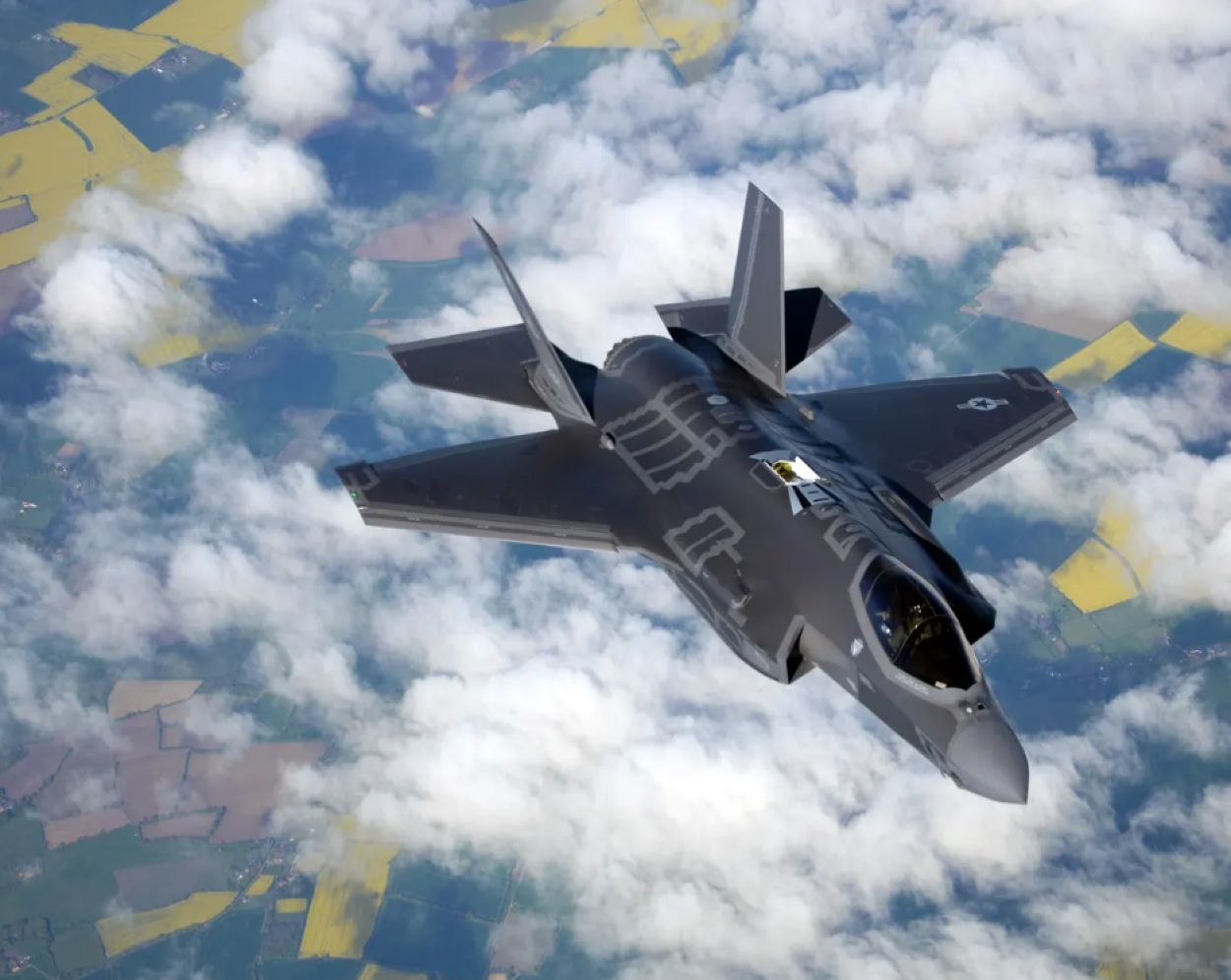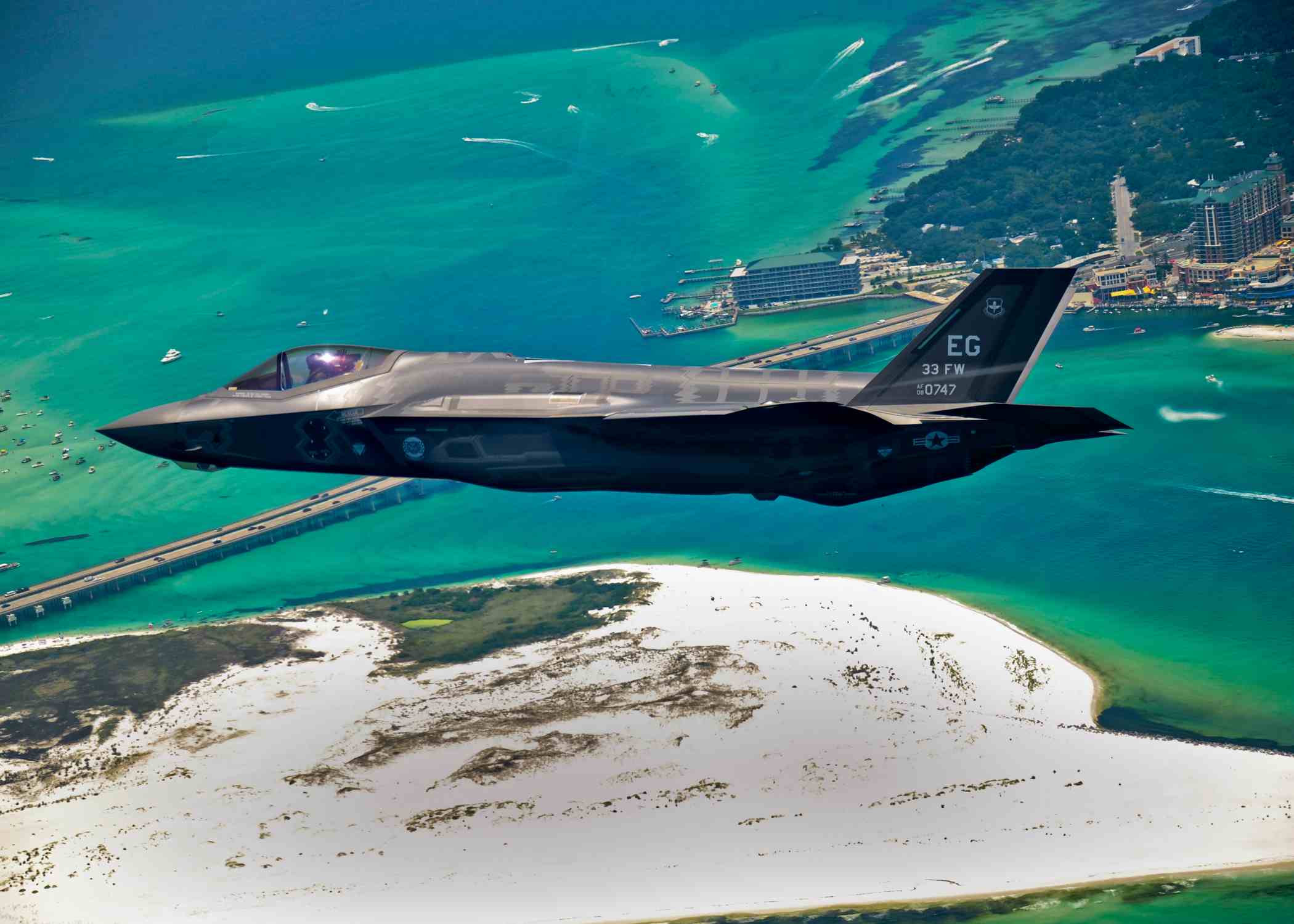US Air Force F-35A fighters detected unusual S-300 radar emissions that didn’t match with the existing database of the air defense system’s radar signature cataloged in the jets’ computers.
This was when the stealth jets were silently gathering electronic intelligence (ELINT) data on Russian air defense radars by flying patrols along the North Atlantic Treaty Organization’s (NATO) eastern flank for the first three months of the war.
A recent article EurAsian Times reported the experience of the 388th Fighter Wing and the 419th Fighter Wing, which were discreetly eavesdropping on Russian radar emissions. But they were surprised to find unknown peacetime frequencies from the S-300 that the pilots knew was the system, but the sophisticated computers aboard the fighters could not identify.
It is common for ground radars to not operate in their actual frequencies in peacetime – called ‘war reserve’ – to prevent adversaries from knowing their capabilities. Twelve jets and around 300 airmen had arrived at Spangdahlem in Germany on February 16, 2022, eight days before the war began.
Stealth Fighters In Stealth Mode Listening to the Radio
The F-35s built a comprehensive radar emissions picture of Russian air defense systems with its highly advanced Distributed Aperture System (DAS) and shared it with other NATO air forces and their own crew.

“(The mission was to) vacuum up as much electronic data as possible from the surface-to-air missiles and aircraft dotting Eastern Europe to build a map to guide NATO operations,” said the report in Air Force Times.
“We weren’t crossing the border. We’re not shooting anything or dropping anything. But the jet is always sensing, gathering information. And it was doing that very, very well,” Col Craig Andrle, the commander of the 388th Fighter Wing.
And it was in Kaliningrad, the detached Russian enclave wedged between Lithuania and Poland, where the F-35s could locate and identify surface-to-air missile (SAM) sites and pass that information to the rest of the coalition.
The presence of an S-300 in Kaliningrad is only natural, as it does have an S-400 platform. It is a standard military as well as Russian practice to have progressively advanced air defense systems forming a part of an ‘echeloned’ or ‘layered’ defense.
But it was the unusual failure to match with the database inside the F-35 that surprised the pilots. Andrle said, “We’re looking at an SA-20 (NATO’s name for the S-300PMU-1 surface-to-air missile system). I know it’s an SA-20. Intel says there’s an SA-20 there, but now my jet doesn’t ID it as such because that SA-20 is potentially operating in a war reserve mode that we haven’t seen before.”
The report added that the jet didn’t always recognize objects around it since assets like air defense systems “have digital ways of evading notice.”

Expert Speak
Former Indian Air Force (IAF) MiG-25 pilot Group Captain Johnson Chacko explains this ‘war reserve’ or ‘training frequency’ as AD radars hiding features like ‘pulse width,’ etc. “This is done so that enemy surveillance does not identify this frequency and plan Electronic Countermeasures (ECM),” he told the EurAsian Times.
San Diego-based systems engineering specialist in radar, sonar, and satellite communications Stephen Pendergrast said AD radars war and training modes also have different pulse repetition frequencies or other modulation parameters.
“Militaries use Electronic Support Measures (ESM) that have a library of modulation parameters their adversaries use in peacetime to classify an emitter,” Pendergrast told the EurAsian Times.
This means the S-300 has additional peacetime modes that the US has not previously recorded. Former Pakistan Air Force (PAF) J-7 fighter pilot Squadron Leader Ali Hamza says if the F-35 cannot detect the S-300, “then it means the S-300 is also a complex challenge.” But he also points out that even the F-35 EW capabilities are still unknown.
Therefore, it can be concluded that Russia had anticipated the F-35s would try to identify and build a Russian radar picture, given their heavily advertised EW/ELINT role. They used a peacetime frequency that the West has not yet recorded.

F-35 Troubled But Still Dangerous
Over the next three months, the jets moved from Spangdahlem to Estonia’s Amari Air Base, Lithuania’s Siauliai Air Base, and Romania’s Fetesti Air Base, according to a press release from US Air Forces in Europe at the time.
It validates the troubled jet’s exponentially advanced Electronic Warfare (EW), sensor, data sharing, networking, processing, and powerful computing features — a new military requirement today that places a high premium on situational awareness.
This has made urgent the need to speed up the planned software and hardware upgrades that have been mired in technical issues and multimillion-dollar cost overruns.
The mission helped the Air Force hone its new short-notice approach to deployments. It also illustrated advances in the F-35′s ability to communicate with the joint force and quickly adjust to unrecognized threats.
The F-35 is centered around an enhanced form of situational awareness. It soaks up electronic emissions from nearby radars, geolocates them, then classifies them by automatically running a database, compiles a picture of friendly and unfriendly forces, and displays it as a comprehensive, holistic picture for the pilot to make the most informed tactical decision.
Retired Royal Canadian Air Force (RCAF) Squadron Commander and former F-35 Lightning II senior test pilot Billie Flynn emphasized this pioneering feature of the jet as its most novel and unparalleled, which is a decade ahead of what the Russians and Chinese are trying to accomplish.
“It is a data-gathering spaceship with 8.6 million lines of software code. It is the capability to mesh all the data and sensors to give the pilot a simplified, prioritized display of knowledge of the battlespace. No data or information but knowledge of what is out there in the battlespace,” Flynn had said in a previous interview with the EurAsian Times.
This implies a distinct, discernible picture of the battlefield that the pilots do not have to sit and analyze. Combine this with F-35s from other NATO Air forces besides other 4.5-generation aircraft like the Eurofighter Typhoon, Dassault Rafale, or the SAAB Gripen.
Russia Won’t Have It Easy With NATO F-35-Led Air Force
The Russian air force will have to face a fleet of highly adaptable formations of jets that are rapidly communicating, adjusting, and largely aware of what the adversary is doing, with very little possibility of having to contend with any deceptive and nasty moves.
The Distributed Aperture System’s exceptionally advanced optical and passive sensors can then relay target data to other friendly fighters through the sophisticated Multifunction Advanced Data Link (MADL). The MADL rapidly transmits packets of data back and forth, making it extraordinarily difficult to intercept.
In fact, like its secret surveillance missions, the F-35 can afford to largely stay out of the fight while other frontline fighters act as ‘missile trucks’, releasing their weapons at targets and directions received from it.
The experience ahead of the war offered new insight into what the F-35 jets are still missing, as the military warns of future fights with Russia or China. The Wing is now awaiting upgrades such as Technology Refresh-3 (TR-3) and Block 4, further enhancing the F-35’s electronic warfare (EW) processing power, speed, and sensors.
Hamza said it is likely that these Block 4 upgrades might incorporate the latest electronic signatures from the Ukraine conflict. Until then, the challenge is to undergo the grind of managing the data gathered, particularly the anomalous readings of Russian air defense.
After the F-35 flagged the ‘radar detections,’ crews updated and re-uploaded the data into the jet. “After that, NATO aircraft knew what they were looking at and how to geolocate it. That makes it harder to take NATO by surprise,” the Air Force Times article said.
But the tedious task of maintaining those databases would persist even after the upgrades, as crews realized updating them regularly and disseminating that information to operational units would be painstaking.
Thus, if any unusual’ war reserve’ or peacetime mode emission from an enemy radar is not updated into the right database at the right time, various NATO and US systems cannot detect it.
- The author can be reached at satamp@gmail.com
- Follow EurAsian Times on Google News





